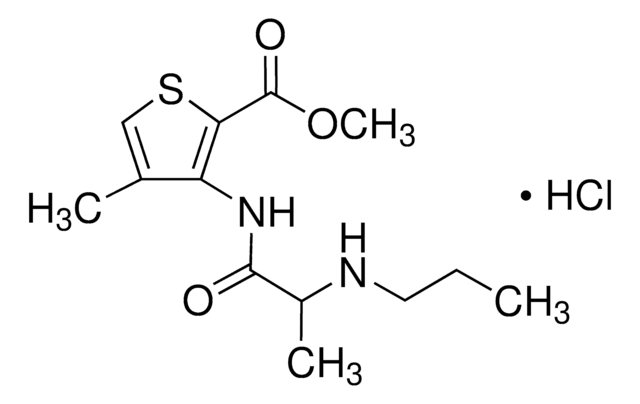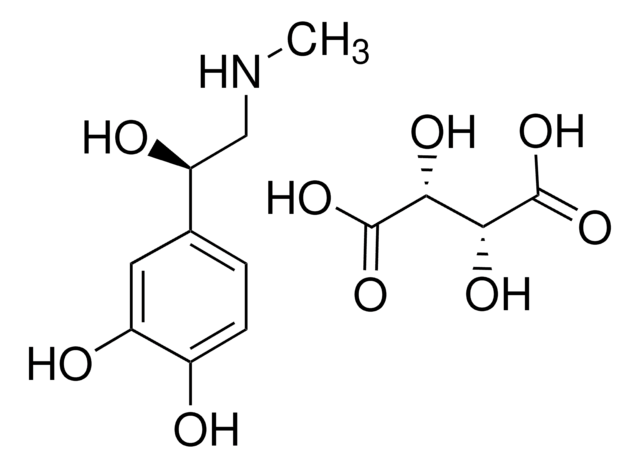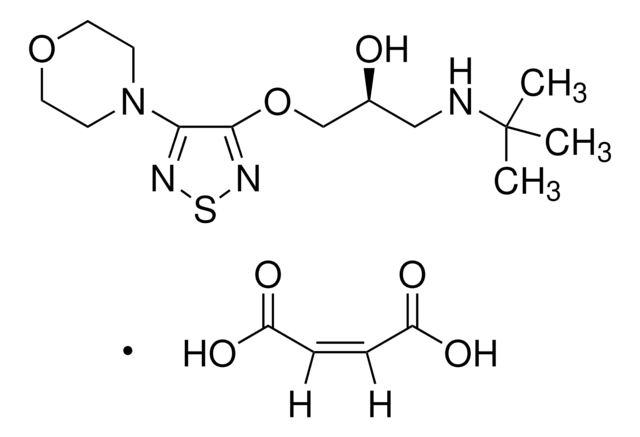Y0000079
Articaine hydrochloride
European Pharmacopoeia (EP) Reference Standard
別名:
4-Methyl-3-[[1-oxo-2-(propylamino)propyl]amino]-2-thiophenecarboxylic acid methyl ester hydrochloride, Carticaine chlorhydrate, Carticaine hydrochloride
About This Item
おすすめの製品
グレード
pharmaceutical primary standard
APIファミリー
articaine
メーカー/製品名
EDQM
アプリケーション
pharmaceutical (small molecule)
フォーマット
neat
保管温度
2-8°C
SMILES記法
CC1=CSC(C(OC)=O)=C1NC(C(C)NCCC)=O.Cl
InChI
1S/C13H20N2O3S.ClH/c1-5-6-14-9(3)12(16)15-10-8(2)7-19-11(10)13(17)18-4;/h7,9,14H,5-6H2,1-4H3,(H,15,16);1H
InChI Key
GDWDBGSWGNEMGJ-UHFFFAOYSA-N
遺伝子情報
human ... SCN10A(6336) , SCN11A(11280) , SCN1A(6323) , SCN2A(6326) , SCN3A(6328) , SCN4A(6329) , SCN5A(6331) , SCN7A(6332) , SCN8A(6334) , SCN9A(6335)
類似した製品をお探しですか? 訪問 製品比較ガイド
詳細
アプリケーション
生物化学的/生理学的作用
包装
その他情報
関連製品
シグナルワード
Warning
危険有害性情報
危険有害性の分類
Eye Irrit. 2 - Skin Irrit. 2 - STOT SE 3
ターゲットの組織
Respiratory system
保管分類コード
11 - Combustible Solids
WGK
WGK 2
引火点(°F)
Not applicable
引火点(℃)
Not applicable
適用法令
試験研究用途を考慮した関連法令を主に挙げております。化学物質以外については、一部の情報のみ提供しています。 製品を安全かつ合法的に使用することは、使用者の義務です。最新情報により修正される場合があります。WEBの反映には時間を要することがあるため、適宜SDSをご参照ください。
Jan Code
Y0000079:
Y0000079-1EA:
最新バージョンのいずれかを選択してください:
ライフサイエンス、有機合成、材料科学、クロマトグラフィー、分析など、あらゆる分野の研究に経験のあるメンバーがおります。.
製品に関するお問い合わせはこちら(テクニカルサービス)






